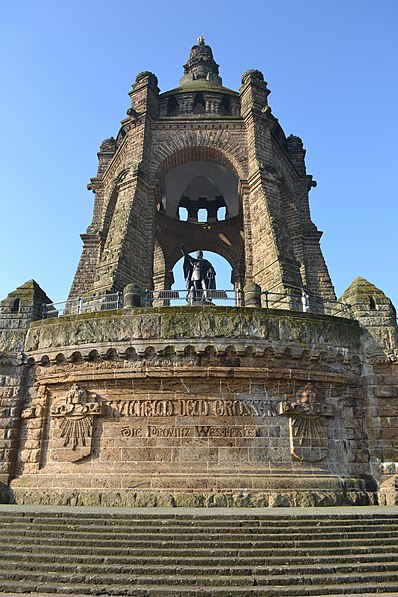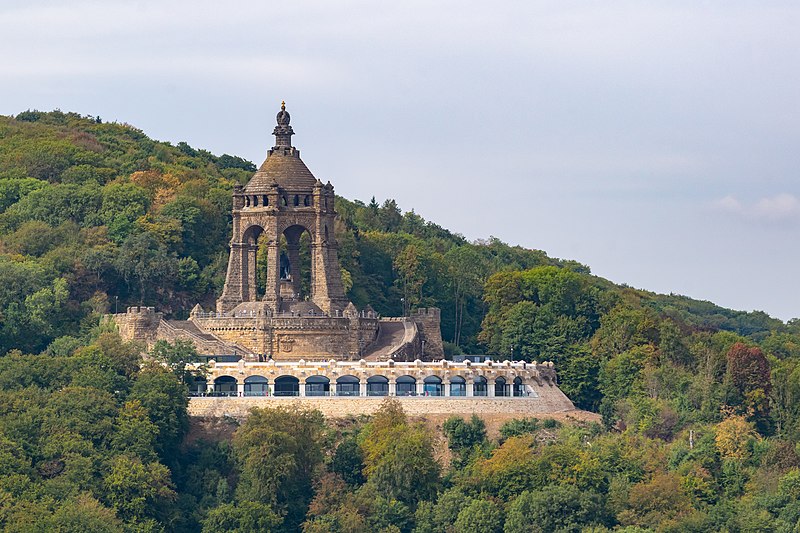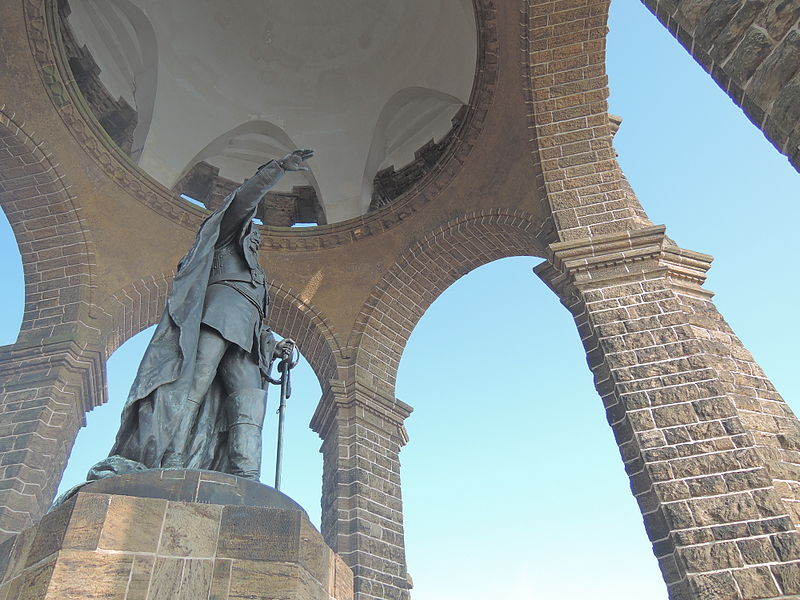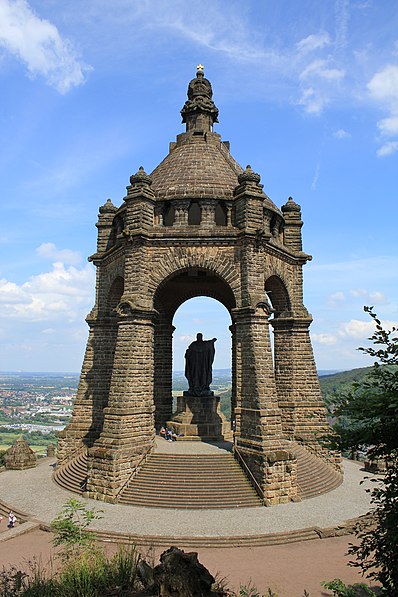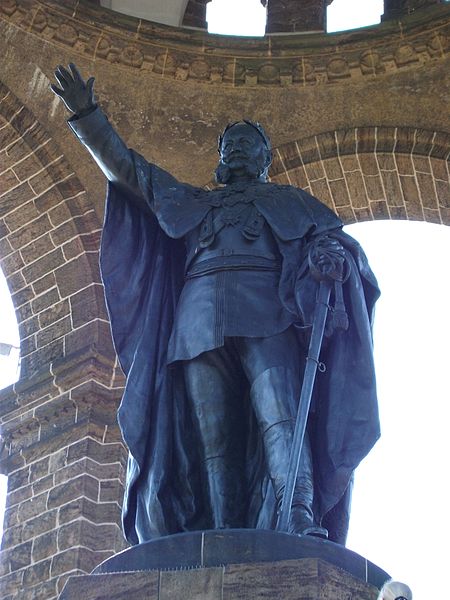Emperor William Monument, Porta Westfalica
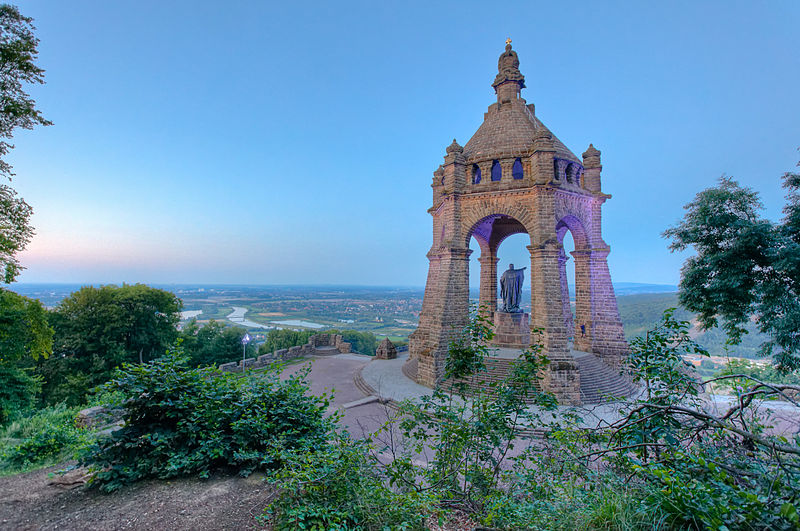
Facts and practical information
Perched atop the rolling landscape of the Weserbergland hills, the Emperor William Monument (Kaiser-Wilhelm-Denkmal) commands a majestic view over the town of Porta Westfalica, Germany. This grand monument, dedicated to Kaiser Wilhelm I, is not only a symbol of German unity but also a significant historical landmark and a popular tourist destination.
Standing at an imposing height, the monument was completed in 1896 to honor the first German Emperor, Wilhelm I, for his role in the unification of Germany. An impressive statue of the Emperor, carved from white marble, sits at the heart of the structure, and the surrounding area is adorned with intricate reliefs and inscriptions that chronicle his reign and achievements.
Visitors to the Emperor William Monument can climb the steps to the base of the statue for a closer look at the intricate details of the sculpture and the stonework. From this vantage point, one can also enjoy breathtaking panoramic views of the Porta Westfalica pass, where the Weser River cuts through the Wiehen and Weser hills, creating a natural gateway that has been strategically significant since Roman times.
The site is easily accessible by car or public transport, with parking available nearby. For those wishing to experience the monument's splendor without the climb, there is a viewing platform that offers similar scenic vistas of the surrounding landscape.
The monument is not just a feast for the eyes; it is steeped in history and culture. The nearby visitor center provides context with exhibits on the monument's construction, the era of Emperor Wilhelm I, and the significance of the location in German heritage.
Emperor William Monument – popular in the area (distance from the attraction)
Nearby attractions include: Porta Westfalica, Wittekindsberg, Evangelische Kirche Holzhausen, Evangelische Kirche Hausberge.


